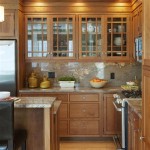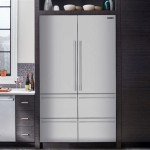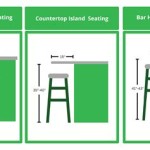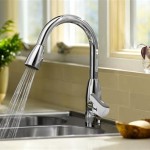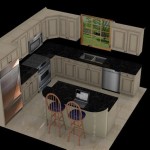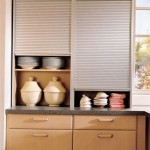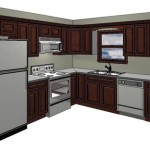Pictures of Kitchen Countertops and Backsplashes: A Visual Guide to Design and Material Choices
The kitchen is often considered the heart of the home, and its design plays a crucial role in both functionality and aesthetics. Countertops and backsplashes are essential elements that significantly contribute to the overall look and feel of the space. Examining images can provide valuable inspiration and guidance when planning a kitchen renovation or new construction project. Numerous design options, material choices, and color palettes are available, making it crucial to understand the various possibilities to create a cohesive and practical design.
Visual representations of kitchen countertops and backsplashes can help to illustrate the interplay between different materials, textures, and colors. Considering the multitude of options necessitates a careful evaluation of various factors, including budget, maintenance requirements, durability, and personal style preferences. The following sections will explore different aspects of countertops and backsplashes, showcasing examples and providing insights into their characteristics.
Exploring Countertop Materials and Aesthetics
Countertops provide a functional workspace and contribute significantly to the visual appeal of a kitchen. Several materials are commonly used, each with its unique properties and aesthetic characteristics. Granite, quartz, marble, wood, laminate, and stainless steel are examples of popular choices that offer distinct advantages and disadvantages.
Granite is a natural stone prized for its durability and unique patterns. No two granite slabs are identical, offering a distinctive look to each installation. Granite is heat-resistant and relatively scratch-resistant, making it a practical choice for busy kitchens. However, granite requires sealing to prevent staining and can be more expensive than some other options. Pictures of granite countertops often showcase the variety of colors and patterns available, ranging from subtle earth tones to bold, dramatic veining.
Quartz countertops are engineered stone, composed of quartz crystals bonded with resin. This material offers consistent color and pattern options, making it easier to match to specific design schemes. Quartz is non-porous, making it highly resistant to staining and bacterial growth. Quartz is also durable and requires minimal maintenance. Images of quartz countertops frequently display sleek, modern designs with a wide range of colors, including solid colors and patterns that mimic natural stone.
Marble is a luxurious natural stone known for its distinctive veining and elegant appearance. Marble is relatively soft and porous, making it susceptible to scratching and staining. However, many homeowners value its unique beauty and are willing to accept the required maintenance. Pictures of marble countertops often feature elaborate veining patterns and a sophisticated, timeless aesthetic. Honed marble offers a matte finish that can help to disguise imperfections and reduce glare.
Wood countertops, often referred to as butcher block, provide a warm and natural aesthetic. Wood countertops require regular maintenance, including oiling or sealing, to prevent water damage and cracking. Different wood species offer varying degrees of hardness and durability. Pictures of wood countertops showcase the variety of wood tones and grain patterns available, from light maple to dark walnut. Wood countertops can be a sustainable and eco-friendly option when sourced from responsibly managed forests.
Laminate countertops are a cost-effective option that offers a wide range of colors and patterns. Laminate is a composite material consisting of a thin layer of decorative paper bonded to a particleboard core. Laminate is easy to clean and maintain but is susceptible to scratching and heat damage. Pictures of laminate countertops often feature realistic patterns that mimic natural stone or wood, offering an affordable alternative to more expensive materials.
Stainless steel countertops are a popular choice for commercial kitchens and increasingly popular in residential settings. Stainless steel is durable, hygienic, and heat-resistant. Stainless steel can be prone to scratching and can show fingerprints easily. Pictures of stainless steel countertops often feature a sleek, industrial aesthetic that complements modern design schemes. Stainless steel is a non-porous surface and easy to clean providing hygienic advantages.
Backsplash Design Considerations: Functionality and Style
The backsplash serves as a protective layer for the wall behind the countertop, preventing water damage and staining. The backsplash also provides an opportunity to add visual interest and enhance the overall design of the kitchen. Several materials are commonly used for backsplashes, including tile, glass, stone, and metal.
Tile is a versatile and popular choice for backsplashes, offering a wide range of colors, sizes, and patterns. Tile is durable, water-resistant, and easy to clean. Different types of tiles are available, including ceramic, porcelain, and natural stone. Pictures of tile backsplashes often showcase intricate patterns, such as subway tile, mosaic tile, and geometric designs. Tile can be customized to fit any design style, from traditional to contemporary.
Glass backsplashes offer a sleek and modern aesthetic. Glass is non-porous, making it highly resistant to staining and easy to clean. Glass can be painted or back-painted to create a custom color. Pictures of glass backsplashes often feature a glossy, reflective surface that adds light and dimension to the kitchen. Glass tile are also available in a variety of colors, shapes, and sizes.
Stone backsplashes offer a natural and textured look. Natural stone tiles, such as slate, travertine, and limestone, provide a unique and organic feel. Stone backsplashes require sealing to prevent staining and water damage. Pictures of stone backsplashes often feature variations in color and texture that add depth and character to the kitchen.
Metal backsplashes provide a modern and industrial aesthetic. Stainless steel, copper, and aluminum are commonly used for metal backsplashes. Metal backsplashes are durable, heat-resistant, and easy to clean. Pictures of metal backsplashes often feature a sleek, reflective surface that complements modern design schemes. Metal tiles and panels are also available in a variety of finishes and textures.
Achieving Cohesive Kitchen Design: Countertop and Backsplash Harmony
The successful kitchen design involves the selection of countertops and backsplashes that complement each other and contribute to the overall aesthetic vision. Coordinating the colors, textures, and styles of these two elements is essential to create a cohesive and visually appealing space. Pictures of well-designed kitchens often showcase a carefully considered balance between countertops and backsplashes.
Color plays a crucial role in achieving a harmonious design. Neutral countertops, such as white, gray, and beige, provide a versatile backdrop for bolder backsplash colors and patterns. Conversely, a vibrant countertop can be paired with a more subtle backsplash to create a balanced look. Considering the existing cabinet colors and flooring materials is also important when selecting countertop and backsplash colors. Warm tones, such as wood and earth tones, can create a welcoming and inviting atmosphere, while cool tones, such as blues and grays, can evoke a sense of calmness and sophistication.
Texture is another important factor to consider when coordinating countertops and backsplashes. Contrasting textures can add visual interest and depth to the kitchen. For example, a smooth quartz countertop can be paired with a textured stone backsplash to create a dynamic contrast. Alternatively, similar textures can be used to create a more cohesive and unified look. The scale of the texture should also be considered; larger textures can be overwhelming in small spaces, while smaller textures can be lost in larger kitchens.
Style is also essential to ensure a cohesive design. Modern kitchens often feature sleek, minimalist countertops and backsplashes with clean lines and simple patterns. Traditional kitchens may incorporate more ornate details, such as decorative tiles and elaborate moldings. Selecting countertops and backsplashes that reflect the overall style of the kitchen will create a harmonious and visually appealing space. Considering the architectural style of the home can also influence the design choices.
Pictures of kitchen countertops and backsplashes showcases the vast array of design possibilities and material choices available. By carefully considering the various factors discussed above, homeowners can create a kitchen that is both functional and aesthetically pleasing. Examining images helps to inspire creative ideas and provide valuable insights into how different materials, textures, and colors can be combined to achieve a desired look. Consulting with a kitchen designer or contractor can also provide valuable guidance and expertise throughout the renovation or construction process.

Matching Your Kitchen Counter Top And Back Splash Francini Inc

How To Match Backsplash With Granite Countertops Infographic

How To Coordinate Your Countertop Backsplash Wildfire Interiors

How Much Should You Budget For Your Kitchen Countertops Backsplashes And Flooring

Match Your Kitchen Countertop And Backsplash At Henry Tile

Same Countertop And Backsplash Cabinet Iq

Matching Quartz Countertops To The Backsplash

Should I Remodel The Countertop Or Backsplash First Suburban Marble

Kitchen With White Flowers On Granite Countertop Matching Backsplash

Are There Rules About Using Counter Material As Backsplash

